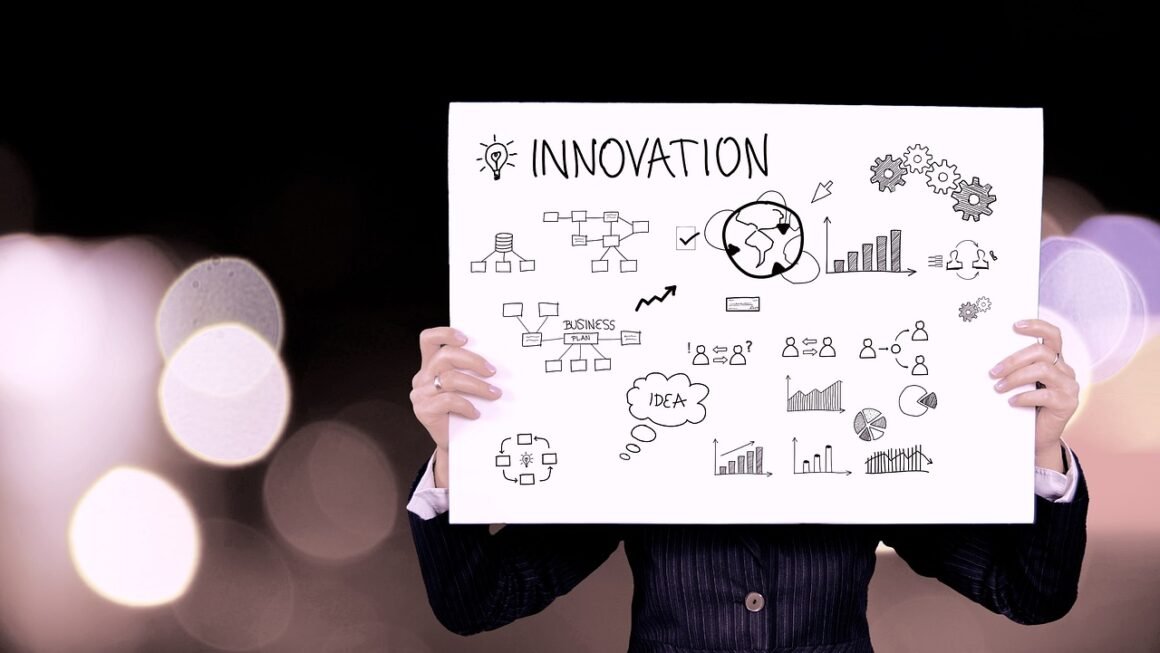Imagine a workday where tasks flow seamlessly, deadlines are consistently met, and you have time left over to focus on strategic initiatives. That’s the promise of a smart workflow. In today’s fast-paced business environment, optimizing how you work is no longer a luxury; it’s a necessity for staying competitive and achieving your goals. This article will explore the core principles of smart workflow, practical strategies to implement it, and the transformative impact it can have on your productivity and success.
What is a Smart Workflow?
A smart workflow is more than just streamlining tasks. It’s a strategic and intelligent approach to how work gets done, leveraging technology, automation, and best practices to maximize efficiency, reduce errors, and improve overall results. It’s about working smarter, not harder.
Defining the Core Components
- Automation: Automating repetitive tasks using software, scripts, or integrations.
- Standardization: Establishing clear processes and guidelines for recurring tasks.
- Collaboration: Fostering seamless communication and teamwork across departments.
- Optimization: Continuously analyzing and refining workflows to identify areas for improvement.
- Data-Driven Insights: Using data analytics to track performance, identify bottlenecks, and make informed decisions.
Why Smart Workflows Matter
- Increased Productivity: Automating routine tasks frees up time for more strategic work.
- Reduced Errors: Standardized processes minimize the risk of human error.
- Improved Collaboration: Centralized platforms and clear communication channels enhance teamwork.
- Better Decision-Making: Data-driven insights provide a clear picture of performance.
- Enhanced Employee Satisfaction: Streamlined workflows reduce frustration and increase job satisfaction. According to a recent study by McKinsey, companies with highly efficient workflows see a 25% increase in employee satisfaction.
- Cost Savings: Reduced errors, increased productivity, and optimized resource allocation lead to significant cost savings.
Building Your Smart Workflow: A Step-by-Step Guide
Creating a smart workflow requires a systematic approach. This isn’t an overnight fix, but a continuous improvement process.
Step 1: Analyze Your Current Processes
- Identify Bottlenecks: Pinpoint the areas where work gets stuck or delayed. Use process mapping tools to visualize your current workflows.
- Track Time Spent on Tasks: Use time-tracking software to understand where your team spends their time. Consider tools like Toggl Track or Clockify.
- Gather Feedback: Talk to your team members to understand their pain points and frustrations. Anonymous surveys can be a valuable tool.
- Evaluate Existing Tools: Assess the effectiveness of your current software and identify areas where improvements can be made.
Step 2: Identify Automation Opportunities
- Repetitive Tasks: Look for tasks that are performed frequently and consistently. Examples include data entry, report generation, and email marketing.
- Rule-Based Decisions: Automate tasks that involve making decisions based on predefined rules. Examples include routing customer inquiries and approving expense reports.
- Integration Opportunities: Identify areas where different software applications can be integrated to automate data transfer and streamline processes. For example, integrating your CRM with your email marketing platform.
- Consider Tools: Explore automation platforms like Zapier, IFTTT, and Microsoft Power Automate. These tools allow you to connect different applications and automate tasks without coding.
Step 3: Choose the Right Technology
- Workflow Management Software: Invest in workflow management software that allows you to design, automate, and track your workflows. Examples include Asana, Trello, Monday.com, and Jira.
- Collaboration Tools: Implement collaboration tools that facilitate communication and teamwork. Examples include Slack, Microsoft Teams, and Google Workspace.
- Document Management Systems: Use a document management system to centralize and organize your documents. Examples include Google Drive, Dropbox, and SharePoint.
- CRM Systems: Utilize a Customer Relationship Management (CRM) system to manage customer interactions and automate sales processes. Examples include Salesforce, HubSpot CRM, and Zoho CRM.
- Project Management Software: Employ software designed to organize projects, manage tasks, and track deadlines efficiently.
Step 4: Implement and Test
- Start Small: Begin by automating a small, manageable task to test your workflow and identify any issues.
- Document Your Processes: Create clear documentation for your workflows, including step-by-step instructions and screenshots.
- Train Your Team: Provide training to your team members on how to use the new tools and workflows.
- Gather Feedback: Solicit feedback from your team members on the effectiveness of the new workflows and make adjustments as needed.
Step 5: Monitor and Optimize
- Track Key Metrics: Monitor key metrics such as task completion time, error rates, and employee satisfaction.
- Identify Bottlenecks: Continuously analyze your workflows to identify any new bottlenecks that may arise.
- Gather Feedback: Regularly solicit feedback from your team members and make adjustments to your workflows as needed.
- Embrace Continuous Improvement: Smart workflow is not a one-time project but an ongoing process of continuous improvement.
The Technology Stack for Smart Workflows
Choosing the right technology is crucial for building a successful smart workflow. A well-integrated technology stack can automate tasks, improve collaboration, and provide valuable data insights.
Workflow Management Software
- Asana: A popular project management tool that allows you to create tasks, assign deadlines, and track progress. Asana offers features for workflow automation, reporting, and collaboration.
- Trello: A visual project management tool that uses Kanban boards to organize tasks. Trello is easy to use and offers integrations with other popular applications.
- Monday.com: A customizable work operating system that allows you to manage projects, track progress, and automate workflows. Monday.com offers a wide range of features and integrations.
- Jira: A project management tool designed for software development teams. Jira offers features for issue tracking, agile project management, and workflow automation.
Automation Tools
- Zapier: A powerful automation platform that allows you to connect different applications and automate tasks without coding.
- IFTTT (If This Then That): A web service that allows users to create chains of simple conditional statements, called “applets”.
- Microsoft Power Automate: A workflow automation platform that allows you to automate tasks across different Microsoft applications and third-party services.
Collaboration Tools
- Slack: A messaging platform that allows teams to communicate and collaborate in real-time. Slack offers features for file sharing, video conferencing, and integrations with other applications.
- Microsoft Teams: A collaboration platform that integrates chat, video conferencing, file sharing, and other tools. Microsoft Teams is part of the Microsoft 365 suite.
- Google Workspace: A suite of online productivity tools that includes Gmail, Google Drive, Google Docs, and Google Meet.
Overcoming Challenges in Implementing Smart Workflows
Implementing smart workflows can be challenging, but by anticipating and addressing potential obstacles, you can increase your chances of success.
Resistance to Change
- Communicate the Benefits: Clearly communicate the benefits of smart workflows to your team members. Explain how it will make their jobs easier and more efficient.
- Involve Your Team: Involve your team members in the planning and implementation process. This will help them feel more invested in the changes.
- Provide Training: Provide adequate training on the new tools and workflows. Make sure your team members feel comfortable using the new technology.
- Address Concerns: Listen to your team members’ concerns and address them openly and honestly.
Integration Issues
- Choose Compatible Tools: Select tools that are compatible with your existing systems and that integrate seamlessly with each other.
- Plan Your Integrations: Carefully plan your integrations to ensure that data flows smoothly between different applications.
- Test Your Integrations: Thoroughly test your integrations to identify and resolve any issues.
- Consult with Experts: Consider consulting with IT professionals or workflow automation experts to help you with your integrations.
Lack of Data
- Implement Tracking: Implement tools and processes to track key metrics such as task completion time, error rates, and employee satisfaction.
- Analyze Your Data: Regularly analyze your data to identify areas for improvement.
- Use Data-Driven Insights: Use data-driven insights to make informed decisions about your workflows.
Conclusion
Implementing smart workflows is a journey, not a destination. By embracing technology, standardizing processes, and fostering collaboration, you can create a work environment that is more efficient, productive, and enjoyable. The benefits are clear: increased productivity, reduced errors, improved collaboration, and better decision-making. Start by analyzing your current processes, identifying automation opportunities, and choosing the right technology. Remember to involve your team, provide training, and continuously monitor and optimize your workflows. The reward is a streamlined, efficient, and effective way of working that benefits both your employees and your bottom line.




